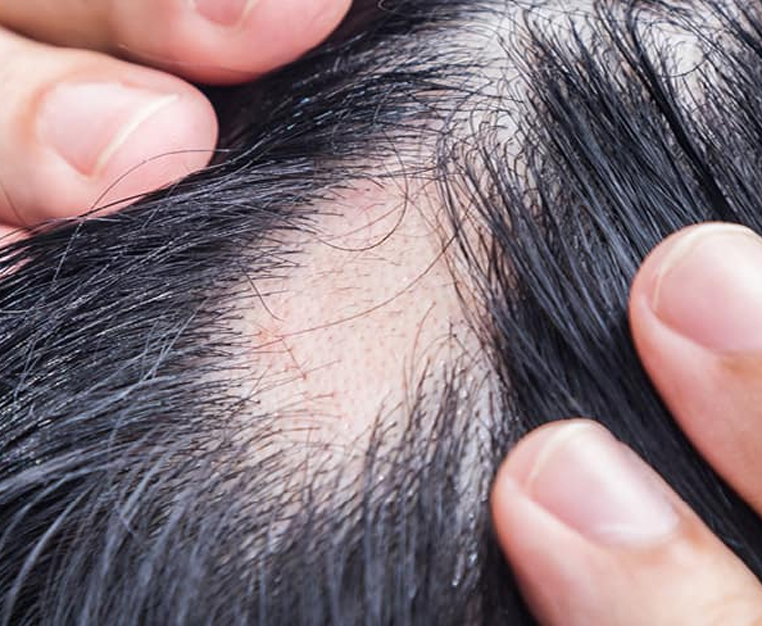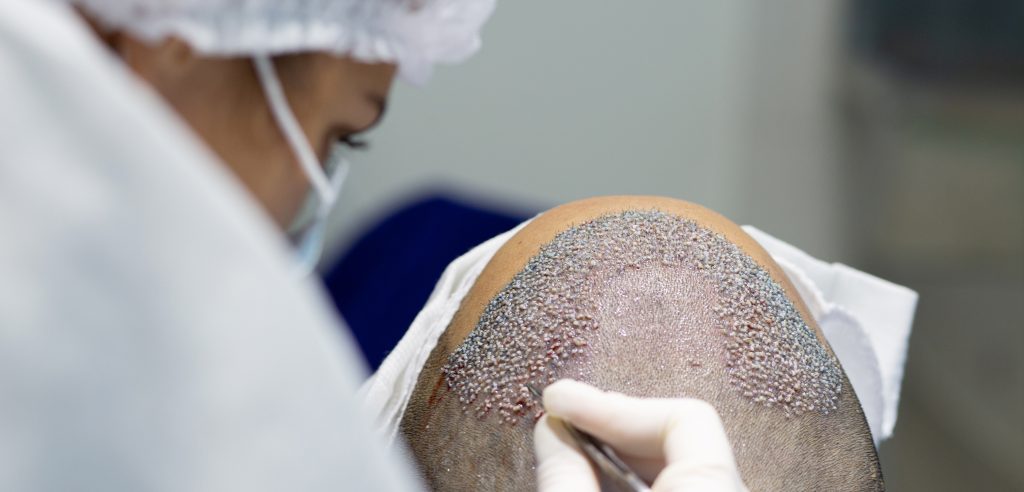
What Can Ruin a Hair Transplant?
Hair transplants have become a popular solution for those seeking to restore their hair and confidence. Statistics indicate that over 650,000 hair transplant procedures are performed annually worldwide, reflecting the growing demand and trust in this cosmetic solution.
Additionally, studies show that an impressive 95% of transplanted hair follicles survive, making the procedure highly effective for most patients.
Despite the advanced techniques and high success rates, certain factors can jeopardise the results of a hair transplant. Understanding these risks is crucial for anyone considering the procedure.
Hair transplantation is a significant investment, both financially and emotionally. The promise of regaining a full head of hair can be life-changing, but it is essential to be aware of what can go wrong. Every step must be meticulously followed from the initial consultation to the post-operative care to ensure the best possible outcome.
This article delves into the various pitfalls that can compromise the success of a hair transplant and provides insights on how to avoid them.
This Article Will Cover:
- Signs of a bad Hair Transplants
- Common Mistakes that Can Ruin A Hair Transplant
- Unqualified Surgeon
- Pre Existing Conditions

Signs of a Bad Hair Transplant
- Uneven or Unnatural Hairline: The hairline appears too low, too straight, or irregular, making it obvious that the transplant is artificial.
- Excessive Redness and Edema: Persistent redness and swelling in the recipient area, especially if accompanied by pain or tenderness, could indicate an infection or poor healing.
- Fever: A fever after the procedure is a serious sign of infection and should be addressed by a medical professional immediately.
- Cysts or Pimples: The appearance of cysts, bumps, or pimples in the transplant area can be a sign of folliculitis (inflammation of the hair follicles) or clogged pores. Its important to note that when the hairs are growing out after shedding it can sometimes appear like pimple.
- Donor Area Thinning or Bald Spots: Overharvesting from the donor area can lead to visible thinning, bald spots, or scarring that compromises the overall appearance.
- Visible Scarring: Large, noticeable scars in the donor or recipient area, especially if they are the result of improper healing or the use of outdated techniques like FUT, are a major sign of a bad transplant.
- Necrosis: Dark patches or areas of dead skin tissue in the donor or recipient area can indicate necrosis, a condition where skin tissue dies due to lack of blood supply, leading to serious complications.
- Scabby or Pus-filled Skin: If scabs persist for an unusually long time or are accompanied by pus, it could indicate infection or improper grafting. Scabbing directly after the hair transplants is normal, but if it persist or reoccurs speak to your clinic.
- Itching: Severe, prolonged itching, especially with redness or irritation, can indicate that the scalp is not healing well or may be infected.
- No Hair Growth: If there’s little to no growth within 6 to 12 months after the procedure, it could be a sign that the grafts were not implanted properly or didn’t survive.
- Hair Growing in the Wrong Direction: Improper graft placement can result in hair growing at unnatural angles, causing an uneven look.

Common Mistakes That Can Ruin a Hair Transplant:
Choosing an Unqualified Surgeon
One of the most critical decisions in the hair transplant process is selecting the right surgeon. An unqualified or inexperienced surgeon can lead to subpar results, including unnatural hairlines, improper graft placement, and even failed transplants.
It is imperative to verify the surgeon’s credentials and experience.
Vinci Hair Clinic boasts over 20 specialist doctors with more than 15 years of experience, ensuring that patients receive top-tier care.
Reasons an Unqualified Surgeon May Lead to a Poor Hair Transplant
-
Poor Hairline Design: The hairline is one of the most critical elements of a successful hair transplant because it’s the first thing people will notice. A skilled surgeon will design a hairline that suits your facial features and age. However, an unqualified surgeon may create a hairline that is too low, too straight, or uneven, leading to an unnatural appearance that makes it obvious you’ve had a hair transplant. This lack of attention to detail can result in long-term dissatisfaction.
-
Overharvesting: Overharvesting occurs when too many follicles are extracted from the donor area, which can lead to visible scarring and thinning in that region. An inexperienced surgeon may take too many grafts, resulting in noticeable bald spots or thinning in the donor area. This can also compromise the future availability of donor hair for potential touch-ups or additional procedures.
-
Excessive Scarring: While most modern clinics use the Follicular Unit Extraction (FUE) method, which leaves minimal scarring, some unqualified surgeons may recommend the older Follicular Unit Transplantation (FUT), also known as the strip method, to cut costs or compensate for a limited donor area. FUT involves removing a strip of skin from the donor site, leaving a long, linear scar that can be difficult to conceal, especially with shorter hairstyles. Excessive scarring from poor technique can be hard to correct without further intervention.
-
Inconsistent Graft Placement: An unqualified surgeon may improperly place the grafts, resulting in unnatural hair growth patterns. Poor graft placement can cause the transplanted hair to grow in the wrong direction or at inconsistent angles, leading to an uneven or patchy appearance. Proper grafting requires precision and attention to the natural direction of hair growth.
In many cases, excessive scarring can be addressed through non-surgical treatments like Micro Scalp Pigmentation (MSP), which helps reduce the contrast between the scalp and the hair, making the scar less noticeable (see the second photo at the top of the article).
By choosing a qualified and experienced surgeon, you can minimise the risk of these complications and ensure a more natural, successful outcome.
Inadequate Pre-Operative Assessment
A thorough pre-operative assessment is vital to determine the suitability of a candidate for a hair transplant. Factors such as hair type, scalp condition, and overall health must be evaluated. Skipping or inadequately conducting this assessment can lead to complications and unsatisfactory results.
At Vinci Hair Clinic, the pre-operative evaluation is comprehensive, ensuring that all potential risks are identified and mitigated.

Poor Post-Operative Care
Post-operative care is crucial for the success of a hair transplant. Patients must follow specific guidelines to ensure proper healing and graft survival. Ignoring post-operative instructions can lead to infections, graft dislodgement, and scarring.
Vinci Hair Clinic provides detailed aftercare instructions and continuous support to help patients navigate the recovery process smoothly.
Unrealistic Expectations
Having realistic expectations is essential for patient satisfaction. While a hair transplant can significantly improve hair density and appearance, it may not fully restore a youthful hairline or cover extensive baldness in one session. It is important to have open and honest discussions with the patient about achievable results.
Vinci Hair Clinic ensures that patients are well-informed and have realistic expectations.
Lifestyle Factors
Certain lifestyle factors can negatively impact the results of a hair transplant. Smoking, for instance, constricts blood vessels and impairs blood flow to the scalp, hindering graft survival. Poor diet and a lack of proper nutrition can also affect hair health and recovery.
Vinci Hair Clinic advises patients to maintain a healthy lifestyle to support the success of their hair transplant.
Using Low-Quality Products
Post-transplant hair care products play a significant role in the recovery and health of the transplanted hair. Using low-quality shampoos or conditioners can cause irritation and damage the delicate grafts.
Vinci Hair Clinic recommends using their specially formulated products that are designed to support hair health and promote healing.

Pre-Existing Conditions
Pre-existing scalp issues can significantly impact the outcome of a hair transplant, potentially leading to poor results or complications. Some common scalp conditions that may affect the success of a hair transplant include:
1. Scalp Infections (e.g., Folliculitis)
Scalp infections, such as folliculitis, can cause inflammation around hair follicles, leading to scarring and poor healing. If the infection is present before the transplant, it can hinder the transplanted follicles from anchoring properly and growing.
2. Scalp Psoriasis
People with scalp psoriasis experience red, itchy, and scaly patches, which can complicate the healing process after a transplant. The condition may cause increased inflammation and affect how well the transplanted follicles take root.
3. Seborrheic Dermatitis
Seborrheic dermatitis causes excessive dandruff, itching, and redness. This can interfere with the healing of the scalp after the transplant and may increase the risk of infection or poor graft survival due to excessive oil production and irritation.
4. Alopecia Areata
Patients with alopecia areata, an autoimmune disorder that causes patchy hair loss, may not be ideal candidates for hair transplants. The condition can cause the immune system to attack both natural and transplanted follicles, leading to poor hair retention.
5. Scalp Scarring
Previous trauma or surgeries that caused scarring on the scalp can make it difficult for hair follicles to grow. Scar tissue has less blood supply than normal scalp tissue, which can affect the survival of transplanted hair follicles.
6. Excessive Scalp Tightness
Scalp tightness from conditions like scalp fibrosis can restrict blood flow and reduce the flexibility of the skin, impacting how well the scalp heals post-transplant. Limited blood supply can result in poor graft survival.
7. Active Dandruff (Severe Cases)
Severe cases of dandruff (seborrhea) can increase the risk of infection and may disrupt the healing process, preventing the hair grafts from embedding properly.
8. Lichen Planopilaris
This is a rare condition that can cause scarring hair loss. Patients with lichen planopilaris may experience ongoing scalp inflammation, which can compromise the success of a hair transplant by causing transplanted hair to fall out or not grow at all.
Before undergoing a hair transplant, it’s important to treat any scalp issues to create an optimal environment for the procedure. A thorough consultation with a dermatologist or hair transplant specialist is crucial to identifying and addressing these issues beforehand.
Conclusion
A hair transplant can be a transformative experience when done correctly. Avoiding common pitfalls and choosing a reputable clinic like Vinci Hair Clinic are crucial steps in ensuring a successful outcome.
With over 100,000 satisfied customers and clinics in 13 countries, Vinci Hair Clinic stands out as a leader in hair restoration.
If you’re considering a hair transplant, entrust your journey to experts who prioritise your satisfaction and results. Visit Vinci Hair Clinic today to learn more and schedule your consultation.


